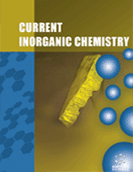Abstract
Force fields were intended to be the more general possible. However, the “missing parameter” problem is a major drawback on the application of classical molecular dynamics simulations to study metalloenzymes. Biomolecular force field parameter sets were initially designed only for organic molecules. The treatment of transition metals is not as straightforward. Metals can have several different types of ligands and the metal-coordination sphere is often flexible with several different geometries possible. The electronic effects of the partially filled d-orbitals make the application of molecular mechanics methods more complicated. Careful consideration of the metal correct charge and spin state should also be taken into account before parameterization. Consequently, the parameters for bioinorganic systems are usually scarce and prior metal coordination spheres parameterization is required. In this review is given a very brief discussion about how the parameters for two widely used force fields, AMBER and CHARMM, were derived. This is followed by a discussion on the feasibility of adding new force field parameters for bioinorganic systems and the possible approaches to attain that objective. Examples are given at the end.
Keywords: Force fields, metal-ligand interactions, molecular dynamics, parameterization Transition-metal chemistry
 5
5

